Haas+Sohn GRAND MAX PLUS II 11 Handleiding
Bekijk gratis de handleiding van Haas+Sohn GRAND MAX PLUS II 11 (13 pagina’s), behorend tot de categorie Heater. Deze gids werd als nuttig beoordeeld door 50 mensen en kreeg gemiddeld 5.0 sterren uit 25.5 reviews. Heb je een vraag over Haas+Sohn GRAND MAX PLUS II 11 of wil je andere gebruikers van dit product iets vragen? Stel een vraag
Pagina 1/13

3
General instructions for operation,
installation and maintenance
COMBINED FIREPLACE STOVE WITH
WARM WATER EXCHANGER
HAAS + SOHN Rukov s.r.o.
MANUFACTURER:
SNP 474, 408 01 RUMBURK, CZECH REPUBLIC
COMPANY ID: 62740989 TAX ID: CZ62740989
CONTENTS
1. TECHNICAL SPECIFICATIONS ........................................................................5
1. 1. Heating concept ................................................................................................. 5
1. 2. Construction design ........................................................................................... 5
2. BURNING PROCESS........................................................................................ 6
2. 1. Fuel quantity and firing process adjustments ..................................................... 6
2. 2. Fuel.................................................................................................................... 7
3. SAFE OPERATION ........................................................................................... 8
3. 1. General requirements ........................................................................................ 8
3. 2. Safe distance between the fireplace stove and flammable material................... 8
3. 3. Safe distance between the smoke flue and flammable material......................... 8
3. 4. Directions for safe operation .............................................................................. 8
4. INSTALLATION AND CONNECTION TO THE CHIMNEY ................................9
4. 1. Connection to the chimney or chimney insert..................................................... 9
4. 2. Connection to the chimney vent ......................................................................... 9
4. 3. Directions for smoke flue installation and safety ................................................ 9
4. 4. Installation of the fireplace stove within the room .............................................10
4. 5. Connection of the fireplace stove with an exchanger to the heating system......10
4. 6. Installation instructions and use of pressure expansion tanks............................11
4. 7. Cleaning the heating device and chimney..........................................................12
4. 8. Chimney fire.......................................................................................................12
4. 9. External combustion air supply system..............................................................12
5. OPERATING INSTRUCTIONS ..........................................................................12
5. 1. Before first operation..........................................................................................12
5. 2. Setting the fire....................................................................................................13
5. 3. Feeding the fire .................................................................................................. 13
5. 4. Glass cleanness.................................................................................................13
5. 5. Operation during temporary period and at worsened weather conditions ..........13
5.6. How to substitute the blind element by the exchanger.......................................14
5. 7. Ash removal.......................................................................................................14
6. CLEANING AND MAINTENANCE ....................................................................14
6. 1. Cleaning.............................................................................................................14
6. 2. Cleaning the ceramics and tiles .........................................................................15
6. 3. Cleaning the warm water exchanger..................................................................15
6. 4. Sealing lines and tapes ......................................................................................15
6. 5. Spare parts.........................................................................................................15
7. WHAT TO DO IF… DO YOU DO IT YOURSELF? ............................................15-16
8. FREQUENT PROBLEMS AND QUESTIONS ..................................................17
8. 1. Cracked (released) fireclay (vermiculite) brick in the burning area.....................17
8. 2. Broken glass ......................................................................................................17
8. 3. Partitions to control the chimney effect ..............................................................17
8. 4. Cracked side tile................................................................................................. 17
8. 5. Replaceable exchanger (option) ........................................................................18
9. PRODUCT LIABILITY AND SERVICE..............................................................18
9. 1. General ..............................................................................................................18
9. 2. Conditions for guarantee....................................................................................18
9. 3. Guarantee and post-guarantee service..............................................................18
9. 4. Claim rejected ....................................................................................................18
9. 5. How to make a claim..........................................................................................19
9. 6. How to order spare parts....................................................................................19
10. MISCELLANEOUS ............................................................................................19
JK 04 164 27 41 14 00 h

10. 1. Accessories supplied with the fireplace stove ....................................................19
10. 2. Special accessories (on order)...........................................................................19
10. 3. Recommended spare parts................................................................................19
10. 4. Package and waste disposal..............................................................................20
10. 5. ES Declaration of Conformity and CE Certificate...............................................20
10. 6. HAAS+SOHN Rukov s.r.o Products and Manufacturing Programme................20
10. 7. Caution!.............................................................................................................21
11. SUPPLEMENTS ...............................................................................................21-25
Congratulations! You have just bought the fireplace stove HAAS + SOHN, a top-quality
product. Thank you very much for your interest and purchase. Kindly read the Operating
Instructions to find out comprehensive information about the function, correct use and
handling. We recommend you to read the instructions carefully in order to avoid any risk
related to likely damage. Proper operation and maintenance affects the service life of the
product as well. In addition, proper operation and fuel supply is connected with fuel savings
and environment protection. Technical specifications are included in the manual.
The manufacturer provides guarantee providing you adhere to the directions and
recommendations in the instructions for operation and maintenance. Keep the operating
instructions and technical card safe to be able to refresh your knowledge at the beginning
of the new heating season.
1. TECHNICAL SPECIFICATIONS
The combined fireplace stove with the warm water exchanger is designed for heating in
habitable rooms, recreational buildings, work stations and other places to provide thermal
comfort, while the visual effect – the perception connected with flame – is similar to the
sensation of live fire. The warm water distribution system may be open or closed, made
with an auxiliary circulating pump or without the pump. The warm water distribution system
may be completed with e.g. service water heater. A good solution may be an integration of
the fireplace stove to the already built heating system with a gas boiler (electric boiler, or
other heating systems). In order to provide safety operation of the fireplace stove and
automatic back-up for the function of the circulating pump in case of electric power failure, it
is recommended to use a back-up power supply (See Supplement 3).
1.1. Heating concept
The fireplace stove is designed for burning wood, eco-fuel cakes and coal cakes (specific
types only) in a burning-through way, characteristic with very good firing conditions.
By means of the warm water exchanger, the fireplace stove hands some 50% of the heat
output in the central heating circuit or floor heating. The rest of the available heat is used
for heating of the air in the room where the fireplace stove is installed.
The air within the room is heated thus the thermal comfort is provided by heat convection,
in part by heat radiation as well. This way, you can heat up even very cold, long-time
unheated rooms very quickly. The concept of heating by means of heat convection is based
on the fact that the air in the room enters the fireplace stove at its bottom part, being heated
in the course of its way up inside the convection space consisting of a double shell of the
heating device. The air then flows through the holes in the upper part of the fireplace stove
back in the room. The radiation heat is generated by means of surface areas of the
fireplace stove (metal, ceramics, glass). Due to the construction, the biggest radiation heat
source is the glass door.
1.2. Construction design
The fireplace stove is welded of steel profiles, thickness 2-5 mm. In the middle of the
fireplace stove, there is a firing chamber that may be closed with a stocking door (equipped
with a self-acting element). The door is provided with special a large-area glass sheet,
thermal resistance up to 800 C. °
The inner space of the firing chamber is usually lined with fireclay brick shapes. The bricks
are not jointed with any filler (the reason is a protection of the bricks against damage by
thermic dilatation). The upper part of the firing chamber is equipped with partitions
designed for directing flue gases into a smoke outlet. The partitions may be fixed or
movable. Such movable partition may serve as a supporting holder for fireclay bricks. At
the bottom part of the firing chamber, a simple, fixed cast grate is installed. Before the
4 5

grate, a barrier is usually provided, to prevent from burning pieces falling out or onto the
door (front glass). Under the grate, there is a space designed for ashpan. The remaining
space at the bottom part of the fireplace stove may be used for spare fuel.
Fireplace stove casing is made of steel panels, ceramic tiles or lined of thick tiles. The
fireplace stove steel construction is protected with special refractory paint.
A part of the fireplace stove system is a warm water exchanger. It is welded of steel pipes,
thickness 4 - 5 mm. The exchanger may be an integrated part of the fireplace stove or may
be removable. Such removable exchanger is screwed to the fireplace stove. If you need to
remove it, you blind the connecting point. This way, you modify the fireplace stove into a
purely air heating system.
The outlets of the heating water are situated on the rear side of the exchanger. The hot
water outlet is marked in red. The reverse (cooler) water is marked in blue.
Caution! The fireplace stove is not designed for continuous heating but for
periodical – interrupted (i.e. temporary) operation.
2. BURNING PROCESS
2.1. Fuel quantity and firing process adjustments
Burning wood, wood cakes (or coal cakes – optional) in the fireplace stove is based on
burning through the fuel, which means that such firing takes place throughout the whole go
of the fuel at a time. In order to provide optimal conditions for easy kindling and burning up,
you need enough air being led under the fuel in fire, through the grate: this is the so-called
primary air, and it must be always controllable. By increasing temperature of the fuel
burning through, certain gaseous components of the fuel evolve that – unless additional air
is supplied – would be of no avail in terms of heat energy: therefore, additional air must be
provided at the flame level where the firing process connected with those gaseous
components may continue. Now, at this stage, the primary air is – in fact – not necessary,
while air supply is required, or air may be added as well, respectively. secondary tertiary
The secondary air supply, usually adjustable, improves the firing process and contributes to
the door glass . The tertiary air supply is designed for general improvement self- cleaning
of the firing process and is usually fixed (one cannot regulate it anyhow). If the proportion of
the air volumes led into the particular sections of the firing chamber is correct, the burning
efficiency is increased while emission of pollutants in the environment is reduced. The
layout of the air supply regulative elements is shown in the Technical Cart (a part of the
documentation supplied with the fireplace stove).
Our models of fireplace stove may reach up to 85% efficiency – which means top
performance.
The heating capacity of the heating device depends on the fuel quantity burnt per defined
time, fuel quality and firing process efficiency. Using the Chart (heating values) may help 2
you to make a picture of attainable capacity: let’s assume that you burn 1 kg of wood per
hour, wood humidity is 20%. Further, with higher wood moisture its heating capacity goes
down.
In the testing room conditions, adjustability of the heating device was tested, within 30 –
100% of nominal performance. For the regulation, the chimney effect and the fuel quantity
were applied. In practice, the heating capacity may be regulated by means of air supply
regulating elements (especially the primary air inlet). There is no simple and explicit way to
determine the firing process adjustment by means of regulators. There are many aspects to
consider – fuel moisture, type of fuel, chimney effect, exterior pressure conditions, etc.
Therefore, the firing process (the flame intensity and quality) should be re-adjusted for
particular conditions.
You will be able to adjust the firing process to achieve best efficiency after a short time of
operation. A detailed chart showing how to adjust the air supply regulating elements is
included in the technical specifications. The figures in the chart are the testing results
verified by the State Testing Laboratory. The Chart 1 presents just general information for
air supply adjustment.
Primary air Secondary air Tertiary air
Fuel Fuel quantity Adjustable Adjustable No adjustment
wooden
logs
wood
cakes
2 - 3 logs (approx. 2 – 3
kg)
2 - 4 logs (approx. 2 – 3
kg)
Open wide Fixed adjustment
at installation
coal cakes
2 - 3 logs (approx. 2 – 3
kg)
Closed or open
(depends on local
conditions)
half-open Fixed adjustment
at installation
Chart 1
Our tips for wood burning
Any time you set the fire, let the primary air regulator open long enough to allow the fuel
burning properly.
Before you re-load, it is recommended to open the primary air regulator wide.
While burning wood, make sure the wood is dry, maximum moisture 20%.
• In order to use the optimal exchanger performance, it is recommended to load and
maintain the wood during the operation just on the grate.
Our tips for coal cake burning (selected models only)
To achieve optimisation of the firing process, load the cakes directly onto the grate holes:
this way, you support the burning in best possible way.
Make sure you do not overload: for the heat capacity you may use, i.e. to maintain the heat,
a couple of cakes is enough: otherwise the device would suffer from excessive heat. Coal
cake fuel efficiency may reach 6 kWh/1 kg, i.e. by some 40% more than wood!
2.2. Fuel
In fireplace stoves, you may burn logs, wood cakes and coal cakes (some models only).
The moisture of the wood to be burnt should be lower than 20%, optimally 10%. The rule of
thumb is: the less water in the fuel, the higher heating capacity you achieve. For the
recommended wood moisture, you may reach it safely if you store the wood in a well
ventilated shelter for at least two years. The water content in coal cakes should be
specified by the manufacturer. The cakes should be stored in a dry room otherwise they
disintegrate. It is recommended to store the wood intended for burning in pieces approx. 3-
6 cm (diameter), 20–30 cm (length). It is forbidden to load and burn coal or charred
coal. In the fireplace, never burn flammable liquids or waste. It is forbidden to burn
papering, chipboards, plastic materials, penetrated wood, wood shavings or saw dust.
Burning such materials not only is detrimental to the environment but shortens the service
life of the heating device as well: you might seriously damage the device or the chimney as
well.
Note: The bark, a part of wooden logs, is no issue at all.
Fuel efficiency: selected types of wood at moisture 20%
Wood Fuel efficiency
kWh/m3
Fuel efficiency kWh/1
kg
Weight kg/(m3)
Spruce, fir 1957 4,0 485
Larch 2461 4,0 610
Pine 2280 4,0 565
Oak, beech 2743 3,8 726
Chart 2
6 7
Product specificaties
| Merk: | Haas+Sohn |
| Categorie: | Heater |
| Model: | GRAND MAX PLUS II 11 |
Heb je hulp nodig?
Als je hulp nodig hebt met Haas+Sohn GRAND MAX PLUS II 11 stel dan hieronder een vraag en andere gebruikers zullen je antwoorden
Handleiding Heater Haas+Sohn

26 Augustus 2023

26 Augustus 2023

26 Augustus 2023

26 Augustus 2023

26 Augustus 2023

26 Augustus 2023

26 Augustus 2023

26 Augustus 2023

26 Augustus 2023

26 Augustus 2023
Handleiding Heater
Nieuwste handleidingen voor Heater
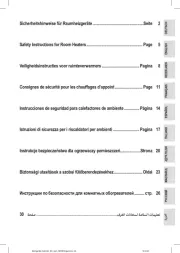
15 September 2025
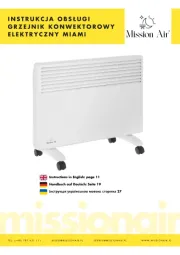
12 September 2025
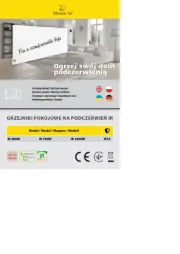
12 September 2025
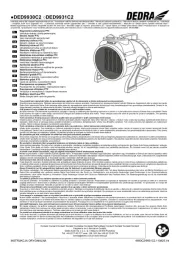
10 September 2025
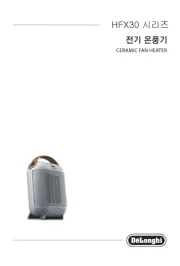
9 September 2025
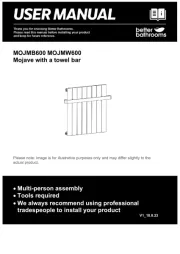
9 September 2025
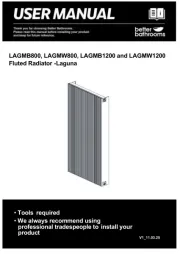
8 September 2025
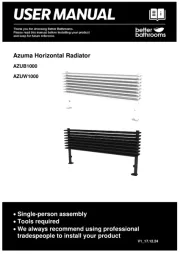
8 September 2025
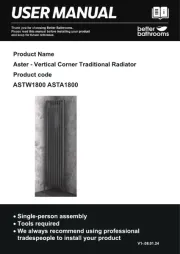
8 September 2025
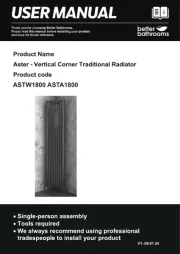
8 September 2025